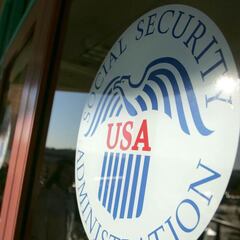When can 401(k) be withdrawn? How does a 401(k) work with retirement?
Workers saving up for retirement may be able to take advantage of a company 401(k) plan but withdrawing money too early can come with a hefty penalty.

Americans have several options they can take advantage of when saving for retirement. One such is 401(k) plan through their employer which depending on the type could come with upfront tax benefits or tax-free distributions when you retire.
However, if you need to withdraw money from your 401(k) plan before you turn 59½ you could incur a hefty penalty. There are some cases where you can draw down on your 401(k)-retirement nest egg after you’ve turned 55 without being punished.
Also see:
- What percentage of my income should I put into my 401k?
- What are the 401k contribution limits 2022?
- Almost 4000 Medicare Advantage Plans available in 2022
- The $8,000 child tax credit parents should know about
- States sending residents extra money in 2022
The basics of 401(k) plans
Named after a section of the US Internal Revenue Code, a 401(k) is a retirement savings and investing plan offered by many American employers. Contributions are automatically taken out of a worker’s paycheck and invested in funds selected by the employee from a list given to them by the plan administrator.
With traditional 401(k) plans, the funds are withdrawn from the pre-tax amount of a paycheck and the employee gets a tax break upfront. However, they will be liable to pay income taxes on them when they withdraw down the road. A Roth 401(k) plan works the other way around, you pay in with after-tax money and then in retirement you don’t pay tax on qualified withdraws.
An added benefit is that employers often offer to match your contributions if you put at least a certain amount into your 401(k) plan. The IRS raised the maximum amount an employee can contribute to his or her account in November, increasing it to $20,500 in 2022, up from $19,500. For savers 50 and older the catch-up deposit amount remained the same, capped at $6,500.
There are a number of options when it comes to new jobs and your 401k. Let's talk about it.
— CNET (@CNET) February 9, 2022
Follow us on Youtube https://t.co/BhuSuomzHj
& on Instagram! https://t.co/5FSPpxCSxQ pic.twitter.com/JwZUmML4F5
The age when you can begin to make withdraws from 401(k) plans
When you can begin taking “qualified” distributions from your 401(k) plan depends on your age at retirement and the rules set by your company. If you make “unqualified” withdraws you will have to pay Uncle Sam a cut.
You can make qualified withdraws after you retire and have turned 59½ from a traditional 401(k) plan. It’s the same case with Roth 401(k) plans but you must also have held the account for a minimum of five years from the date you began contributing.
The 401(k) Rule of 55
Between the age of 55 and 59½ you can pull money out of a 401(k) plan in the event that you get laid off, fired or quit your job without being penalized. Otherwise if you dip into your 401(k) savings before you are 59½ you’ll have to pay 10 percent penalty and taxes on any money you withdraw. How unqualified distributions from a traditional and a Roth plan are taxed differ when withdrawing funds.
The full amount that you pull out of a traditional 401(k) plan will be subject to a 10 percent penalty in addition to income taxes. Whereas, because you already paid taxes on the money that you put into a Roth 401(k) plan you’ll pay a pro-rata amount of your contributions, which are non-taxable, and earnings, which are taxable.
The Great Resignation: How to handle your 401k if you leave a job https://t.co/zVzug7eKMy by @colettebennett pic.twitter.com/6ygOAGgQAH
— Yahoo Finance (@YahooFinance) November 28, 2021
Required Minimum Distribution
Related stories
When you retire, you can no longer put any more money in your 401(k) plan but depending on your age, you are not required to start taking distributions right away. Required minimum distributions kick in 1 April the year after you turn 72.
The amount that you need to withdraw on a regular periodic basis is calculated using your account balance and life expectancy. You cannot pull out less than your required minimum distribution but you are allowed to take out more than that amount in any given year.


